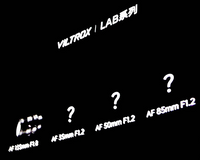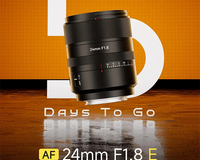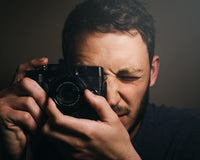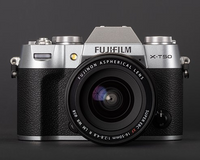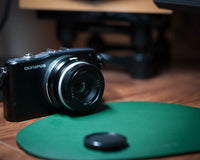Hi, my name is Dylan Siragusano (@scopic.drive) and I am a street and documentary photographer based in Nice, in the south of France. I started street photography in 2006, then I became a wedding photographer in 2009. I was exhibited at the rectorate of Rome as part of the commemoration of 150 years of the unification of Italy in 2011. I am also graduated in psychology. These two areas are intimately linked and nourish each other.
To me, photography is a way to question our relationship to our environment but also to ourselves.
Street photography is, in my opinion, one of the most difficult disciplines. Whether it is on the photographic technique to be used which goes beyond the "standards" of classical photography, but also the positioning of the photographer and his relationship to the photographic subject.
Street photography requires convictions, involvement, perseverance, motivation... etc. And it is sometimes difficult to know how to orient yourself in this practice without advice and tips.
This article is therefore intended primarily for people wishing to embark on this great adventure. It is also aimed at experienced photographers who wish to deepen their practice and go "beyond the frame" of what they already know. Because of this, some tricks will appear to be basic things to people with previous experience, but are worth dwelling on for a few moments.
Getting back to the basics is also going back on the path from which we deviated at one point in our practice...
Tips for choosing the equipment that works for you

The choice of material is often the first thing for the aspiring street photographer.
Lost in an exponential choice, it often turns out to be very difficult to orient yourself when you are unable to define what you need. Certain rules however prevail when it comes to choosing a camera for street photography: it must be compact, fast to be able to take it out quickly, discreet... etc.
In reality, there are no rules regarding the choice of material, because every photographer is different and has different needs. The camera remains a tool that should allow you to take pleasure in doing what you want to do.
You can search the internet for "what is the best camera / lens for street photography" and you will come across standardized results that do not take these individual parameters into account.
The first trick is to start street photography with what you have on hand: the vacation camera lying around, your grandfather's film camera, or even your cell phone. You have to experience as quickly as possible what it is to be in the street to photograph in order to define your needs. When you have made your first outings you will more simply be able to determine the objectives you want to achieve with your photographic tool:
"I would have liked a wider angle" or conversely "to be able to zoom in this situation", "I would have liked that my lens captures more light" or "that my equipment is tropicalized to take pictures in the rain" etc...
From this first experience you will be able to define 4/5 singular criteria, which belong to you, and which will guide the choice of your equipment according to YOUR needs and your budget. For my part, by way of example, my main criteria are: 1-compactness, 2-tropicalization, 3-image quality, 4-a tilting screen.
Compactness is my first requirement because for me the best camera is the one that I can take anywhere, without hesitation. This is not a fundamental rule, Robert Doisneau photographed mainly with a large rolleiflex for example...
The choice of the camera, even if it is important, should not inhibit the desire to take pictures. In this sense, it is important to choose a device that you like to use without developing too much attachment to this object which remains a means of achieving what you want and nothing more.
Tips for choosing a lens : stimulate your creativity with less

Once you have chosen your device, you will certainly have to choose a lens that suits you.
In the same way as what has been described previously, you can define criteria that will guide your purchase according to your needs. A question that often comes up in the first moments is that of buying a zoom (with a focal length which may vary) or a fixed lens.
For the aspiring photographer, it is often difficult to determine precisely the focal length that corresponds to your style. Even if during your first outings you will be able to determine more simply what you want to do, street photography can indeed be broken down into a multitude of subgenres: candid, street portrait, urban and architectural photography, documentary...etc.
One of the first tips that is often given to beginners is to start with the kit lens sold with your camera. This often covers a wide focal range (often between 24mm and 85mm in full frame equivalence), but can become limiting depending on the photographic style.
When you have taken several hundred photographs, the image exif will allow you to statistically determine the focal length that you have used the most. The zoom allows more latitude and flexibility in its practice, which may appear to be an advantage.
However, and depending on your criteria, it may not be suitable for all situations: it is inflexible in low light situation, it can be big and heavy, and have no identity in terms of image quality. There are some great photographers who continue to use the lens kit of their favorite camera as a priority.
There is a general belief that the best material makes better photos. This is absolutely false and is not based on artistic logic but on marketing logic. Our current cameras are much more advanced than those of a century ago, yet the great masters of photography still prove today through their productions that they could make masterpieces with much less than what we have today ...
Again, this is not about getting into an endless quest for better material at the expense of our needs and the practice of photography itself. Moreover, the logic of acquiring minimalist material, with a prime lens, is based on this philosophy.
It is customary to hear that "less is more" and you will see that in term of creativity, the limitations will lead you to push your creativity to all its limits, to know your material inside out, and to know its limits.
Concerning me, I shoot mainly with a lens equivalent to a 35mm and which opens at f2. This choice was made after many years of practice and is based on these criteria: 1-the identity of the lens 2-the compactness, 3-the maximum aperture, 4-the versatility of the focal length. It's your turn to choose yours... once again, there is no universal rule in terms of street photography equipment.
It is often advisable to choose a focal length between 24mm and 85mm but nothing prevents you from going out of this area as long as you enjoy using your equipment that meets your needs. For example, I have already done photo sessions with a fisheye lens...
A few tips all the same: if you want to include the environment of your subject in the image, preferably choose a focal length that does not exceed 35mm in full frame equivalence. If you want to highlight your subject, preferentially choose a focal length around 50mm and more. For the choice of aperture, choose at least a lens that opens at f2 if you want to take pictures in low light or if you want to detach your subject from the background.
Tips on the settings of your device: priorities and hyperfocal

Now that your equipment has been chosen it is a question of choosing the settings that best suit your practice.
However, certain adjustments often appear to be obvious with regard to street photography, which must meet certain criteria, the main one being speed. As said before, you do not control your environment and what will spontaneously happen there. You can, however, prepare as much as possible for it.
The beginner will prefer to set his camera to full auto but in this case it is very difficult to make adjustments that will satisfy your creativity. Indeed, we sometimes want to separate the subject from its environment, or conversely to give more depth to our image.
Some want to freeze the moment while others prefer to play with blurs to do panning for example, or simply to express a movement. Some will want to play on the contrast of an image while preserving the highlights while others will seek to capture, conversely, the maximum information in the shadows...
Difficult to achieve these objectives if we allow the camera to choose for us. Those who wish to go beyond this will be interested in "intermediate" modes such as aperture priority or shutter priority. These modes constitute a happy medium between the automatisms of the camera and the identity that the photographer wants to give to what he captures.
I mainly use the "aperture priority" mode which allows me to choose the depth of field that I want to give to my image. If I want to isolate the subject from its surroundings, the only thing I have to do is turn the aperture ring on my lens to a large aperture (f2 or greater) before firing.
Conversely if I want depth I choose a small opening (f8 and beyond). I like to freeze expressions and movements, my camera then only adjusts the exposure speed according to my previously set parameters: I don't want it to go below 1 / 250s, it then adjusts the isos to a maximum sensitivity of 6400 iso if necessary.
I prefer to save movement at the expense of image quality if necessary, because that's what matters most to me. You can do the same by giving priority to the speed of exposure, the camera choosing the aperture of the lens as well as the isos, depending on the situation.
Regarding photometry, I generally set my camera to "multi" which allows me to expose my photo with the most latitude. I correct if necessary with the exposure compensation dial, when the high lights are too pronounced or the shadows too "blocked".
It is also quite possible to venture to use your camera in "full manual". This allows you to give full control to your camera and stimulate your creativity. Current devices also allow you to preview the photo according to your settings, which allows you to easily adjust the parameters according to the desired effect.
Regarding the focus, my secret is mainly based on the use of an ancestral technique: the hyperfocal. I rarely use autofocus because it is sometimes less precise than manual focus, especially in low light or when there is too much information in the image. In this, manual fixed lenses are not a limitation.
The hyperfocal allows to determine in advance a scale on which the photograph will be sharp, according to the chosen aperture. This scale appears on some manual lenses which allows to know the hyperfocal quickly.
For the other lenses, I use a mobile application which calculates this scale for me according to my parameters. For example, if I use my lens equivalent to a 35mm, with an aperture at f/8 and manually adjust my focus to 3m, my photo will be sharp between 2m and 20 meters approximately.
This is very useful in situations where you need to trigger very quickly to capture the moment. I also use the "focus peaking" function which allows to preview the sharp elements by highlighting them in my viewfinder.
With these parameters, you are ready for any situation to take your best photos...
Tips for a successful photography: chasing the light

What distinguishes a basic photo from a successful photo? Why do we remember the works of great photographers?
The practice of photography has led me to certain observations that I will share with you here. A good photograph, when it is possible to control each of the parameters, whether they are personal (camera settings, position in the scene, etc.) or linked to the environment (gesture and expression of the person, arrangement of the decor, lighting conditions, etc.) is based on 4 main criteria: Light, composition, moment, and storytelling.
These criteria cannot be researched simultaneously in the conditions of street photography because we are confronted with the random and the spontaneous. But understanding these elements already allows you to take a step to try to get as close as possible to them.
I have already spoken of the criteria of the ''moment'' in the choice of photographic parameters, above. The rules of composition cross the ages and transcend the various arts for thousands of years.
The storytelling aspect will be discussed in the last part. I decided here to focus particularly on light because it is, in my opinion, the basic element without which photography could not exist (photography literally means "to write with light").
For this, I advise you to put yourself in the shoes of a light hunter. This can considerably change the perception of a scene, enhance it or on the contrary make it invisible. We must educate our eye to perceive the variations of light and how it acts on our perception, how it shapes our world.
As a street photographer we are faced with a multitude of variables. However, it is possible to anticipate as much as possible the impact of light outside of studio conditions. For this, I use a mobile application which allows me to "predict" the incidence of light in the city.
It allows me to calculate the direction of the sun's rays (ephemeride) according to my gps position and the time of day. I can then direct my urban exploration by following the light, throughout the day.
By the way, you have certainly already heard that the world belongs to people who wake up early. I think this adage is true when it comes to photography, and I would add that it also belongs to those who go to bed late.
I see photography as a way to show what is difficult to see: the beauty of things around us, a way to archive my environment for those who will not be able to see it later, to freeze a fleeting interaction who will suddenly faint. Morning and night are times of the day that we are not used to seeing.
Getting out of your comfort zone often pays off in street photography. It stimulates our creativity, allows us to take a new look at what surrounds us. In addition to this, nature rewards us for our efforts because the most beautiful lights are found at sunrise and sunset.
I also have a particular affection for artificial lights at night... Knowing the time of sunrise and sunset allows you to be ready, at the right time, in the right place and to deal with this main parameter of the photography that is light.
Tips for building confidence and ethics as a street photographer: To hide or not to hide ?

As announced in the introduction, street photography is a discipline apart, which is very engaging humanly speaking and which leads us to photograph people who do not have the demand or the desire, unlike other styles of photography...
Photographing strangers, in a candid way, here is a way to get out of your comfort zone and come into contact with reality. In this sense, street photography can be seen as a way to connect with your environment, and photography then becomes the fruit of your interactions.
I have many times been challenged by street photography enthusiasts who questioned me about my way of taking people "on the spot" and what their reaction was, how I felt, if I was hiding ... etc.
My answer is often the same: 70% of the people I photograph just don't care me, 25% are flattered and 5% are questioning... So why this fear of photographing strangers? I think that the answer lies above all in the fact that we were not able to clarify beforehand the reason for which we take pictures of them (the stranger stands inside our hidden self), and the strange character of our practice, when it is unresolved, is projected onto the subjects we photograph with shame and embarrassment.
My first tip is therefore to take the time to define the reason that drives our passion for photography: do you want to document the life of your neighborhood? Do you want to report something? Do you want to testify to an era? From the activity of a specific geographic area? ... etc.
These reasons are individual and belong to each of us. It clarifies our position when we go to the street to photograph our environment but also guide our practice and thus gives substance to the last criteria of good photography: the storytelling. In my opinion, this story unfolds in the front and back of the camera.
The photographer should not be reduced to a passive and voyeuristic eye which can be frightening, and we should not likewise reduce the subject we are photographing to a simple image. This is the unique meeting of two or more human beings.
When we approach street photography in this way, our attitude changes: we are more open to others, to discussion, we photograph with respect for dignity and thus we gain confidence. When we have enough confidence, that we have defined the reasons which push us to photograph and that we are convinced that we are doing no harm, it is no longer useful to hide, and it can be a real liberation.
Does no longer hiding necessarily mean asking for permission? Not exactly... you will learn that asking for permission comes as a reminder that interferes with the spontaneity of the situation and the subject's candid response.
In this case, and if you are doing street portraits, I recommend that you use the tilt screen on your hips and keep eye contact with the person you are photographing. They will feel confident and forget to strike a pose. In other cases, discussions can occur after the photo, it is extremely rare that someone asks me to delete the photo.
It even happens to me more and more often that people ask me to take their picture in the street. Some may ask you why you are doing what you are doing and you may be able to give them the answer you took the time to answer for you before.
For my part, when people ask me, I explain that I am in the process of editing a photo book on the city of Nice, I explain to them what interests me about them and everyone ends up happy. There is nothing worse to come home with the frustration of not having dared to take a photo...
Another tip is to go to the same place regularly to photograph. You will eventually get used to the place and the people, and they will do the same, you will blend into the surroundings and become familiar. Some will even start to recognize you, to talk about you, and you will have the opportunity to photograph them at different times of the day.
Final thoughts

These few tips should allow you to find ease in your practice of street photography and could be summarized in three essential points:
1-define your needs, which will help guide the choice of your material.
2-Define your desire as a photographer, which will allow you to build your photographer's ethics and your style.
3-Define objectives, which will allow you to give direction to your photographic work and to gain confidence in what you accomplish.
The photographic technique is learned with experience, there is no magic formula, all the more so in street photography which is a practice that breaks the codes. The general rules of composition also apply to this area but are not inviolable. It's up to you to invent your own style in relation to your own sensitivity.
The field is wide, and the creative freedom unlimited in this area. Street photography can be liberating, all the more so at a time when interactions are rarer and everyone withdraws into oneself ...
We must then come back to the very foundations of street photography which are exposed in this article and come back to the very essence of this practice which consists in witnessing what is happening in our streets, in being a spectator but also an actor. So what about photographer expectations?
These can be motivating, but it can also be confusing. When we walk in the street, we have to put aside our expectations and our ideals, stop wanting to foresee everything and accept being surprised by the best that life has to offer...
Finally, street photography is based on a strong community of photographers around the world, rich in experience, advice and various tips. So do not hesitate to take part in this big family, to share, to criticize, to expose, to comment through the large panel of social networks, in order to improve your practice and that of others.








